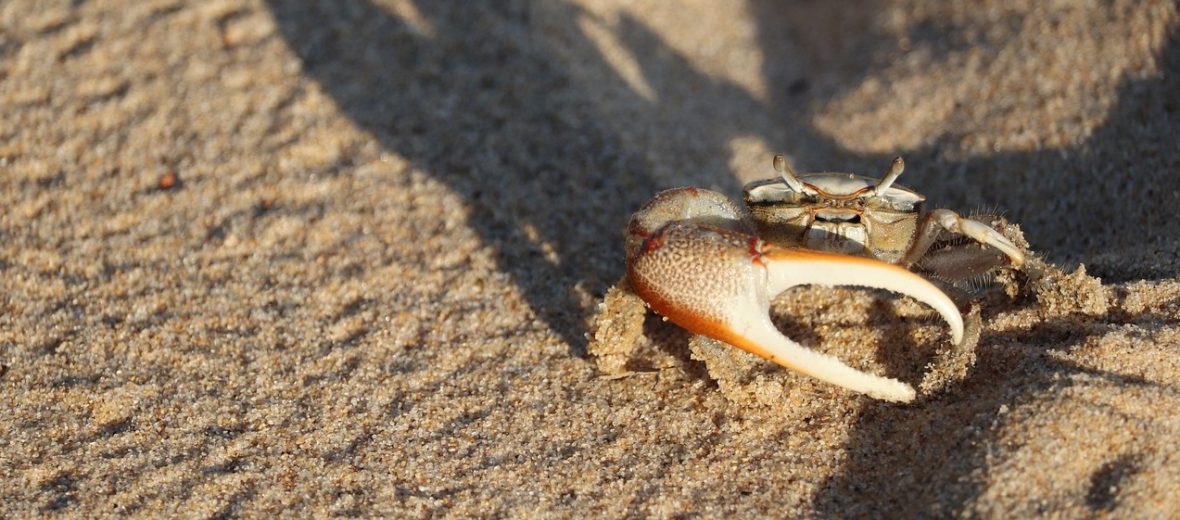
The fiddler crab, aka calling crab, is found in sea beaches and brackish intertidal mud flats, swamps, lagoons, and a variety of other types of brackish or saltwater wetlands of southern United States to South America. There are around 100 known species of semiterrestrial marine crabs in the family Ocypodidae. These crabs are numerous and are not currently evaluated by the IUCN.
First the Stats…
Scientific name: Uca
Length: Up to 2 inches
Lifespan: Up to 3 years
Now on to the Facts!
1.) These crabs are often kept as pets. However, they tend to have a very short lifespan, as they are sold as freshwater crabs. They are, in fact, brackish water creatures. They won’t live long in pure freshwater environments.
2.) Fiddler crabs are sexually dimorphic, in that the males have the oversized claw. Females lack this feature.
3.) Since they are quite vulnerable after they freshly molt, they will hide until their exoskeleton hardens.
4.) The fiddler crab displays a constant circadian rhythm that mimics the ebb and flow of the tides: they turn dark during the day and light at night.
5.) They communicate via a sequence of waves and gestures.
But wait, there’s more on the fiddler crab!
6.) Why the large claw? The males use this oversized appendage in combat with other males and to signal their intent to mate with females.
7.) Fiddler crabs feast on algae, microbes, fungus, and other decaying detritus.
Did you know…?
Just like all crabs, fiddler crabs shed their shells as they grow. If they happen to have lost legs or claws during their growth cycle, new ones will be present after they molt.
8.) After a dab of sediment is sifted through for nourishment, and all the nutrients taken from it, the dab is placed back on the ground in the shape of a tiny ball.
9.) By sifting through the sand, these crustaceans aerate the substrate and prevent anaerobic conditions.
10.) The female will choose her suitor based on the size of his claw (I guess size does matter) and the movements of said claw.
But wait, there’s still more on the fiddler crab!
11.) In numerous fiddler crab species, the female takes up residence in the burrow of their mate while she lays her clutch of eggs.
12.) Fertilized females carry 100s to 1,000s of eggs under their abdomen.
Did you know…?
Even though wild crabs are filter feeders that feast on detritus, in captivity, they may occasionally feast on smaller passing fish. So it is ill-advised to keep them with smaller fish, less ya be losing 1 fish at a time.
13.) The female stays in the burrow during a 2 week gestation period, after which time she ventures out to release her eggs into the receding tide. The larvae remain planktonic for another 2 weeks.
14.) In some species of fiddler crab, if a male loses his larger claw, the smaller 1 will begin to grow larger and the lost claw will regenerate into a new smaller claw.
15.) Fiddler crabs like Austruca mjoebergi have been seen bluffing about their fighting ability. Upon regrowing a lost claw, a crab will occasionally regrow a weaker claw that still intimidates crabs with smaller but stronger claws. This is an example of dishonest signalling.
16.) They are sometimes known as “sponge” crabs.
Now a Short Fiddler Crab Video!
Be sure to share & comment below! Also, check out the Critter Science YouTube channel. Videos added regularly!
Want to suggest a critter for me to write about? Let me know here.



